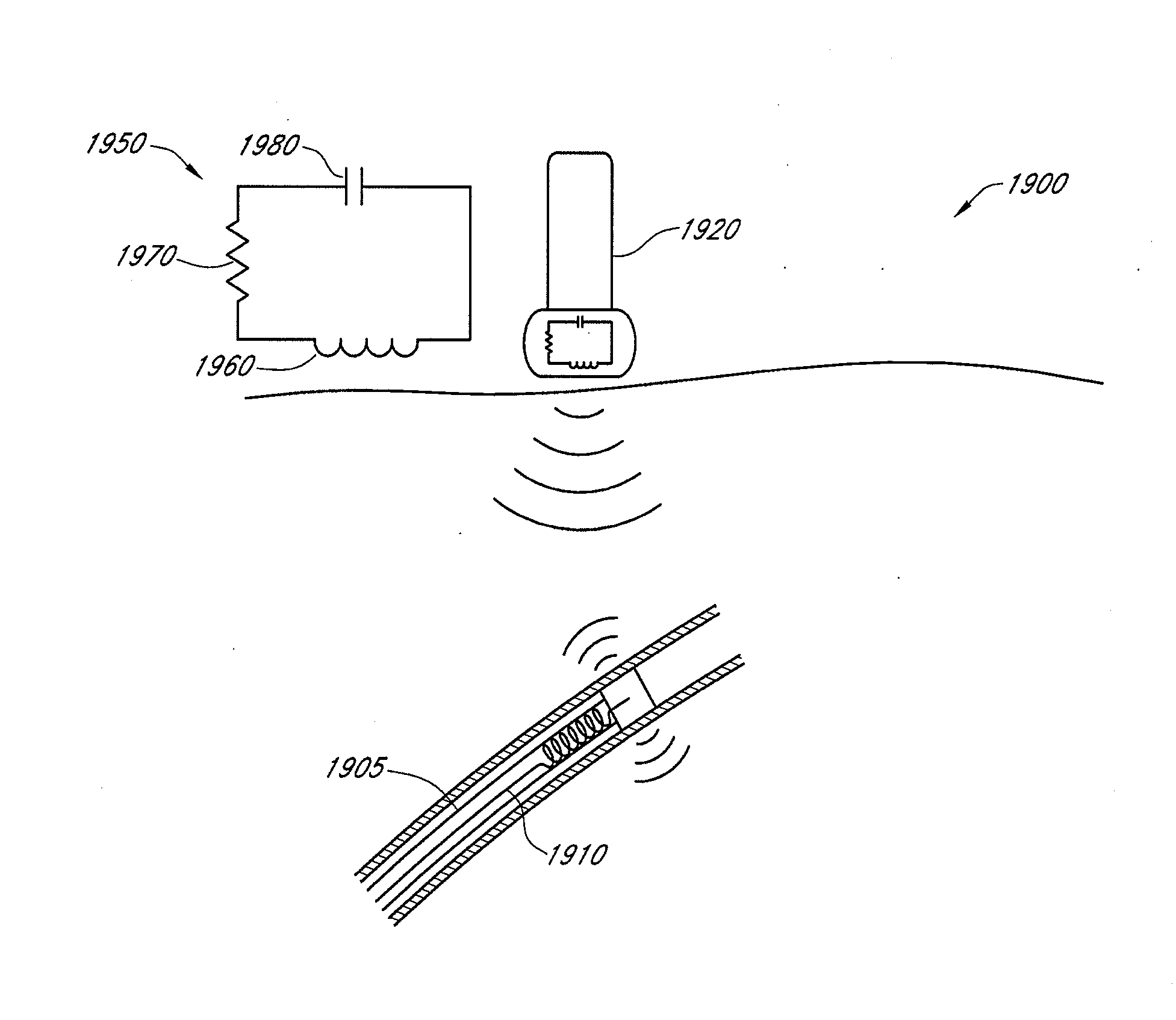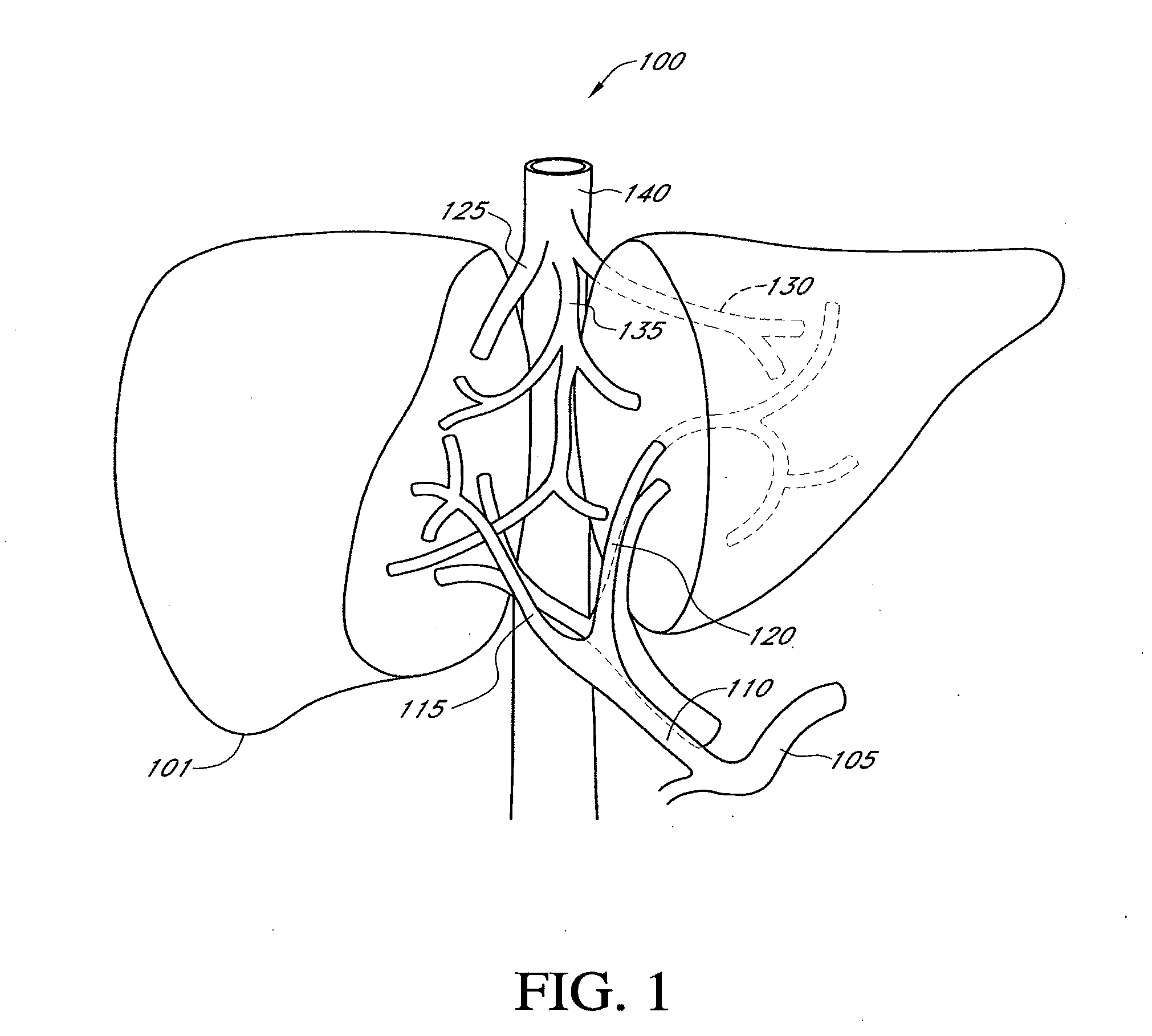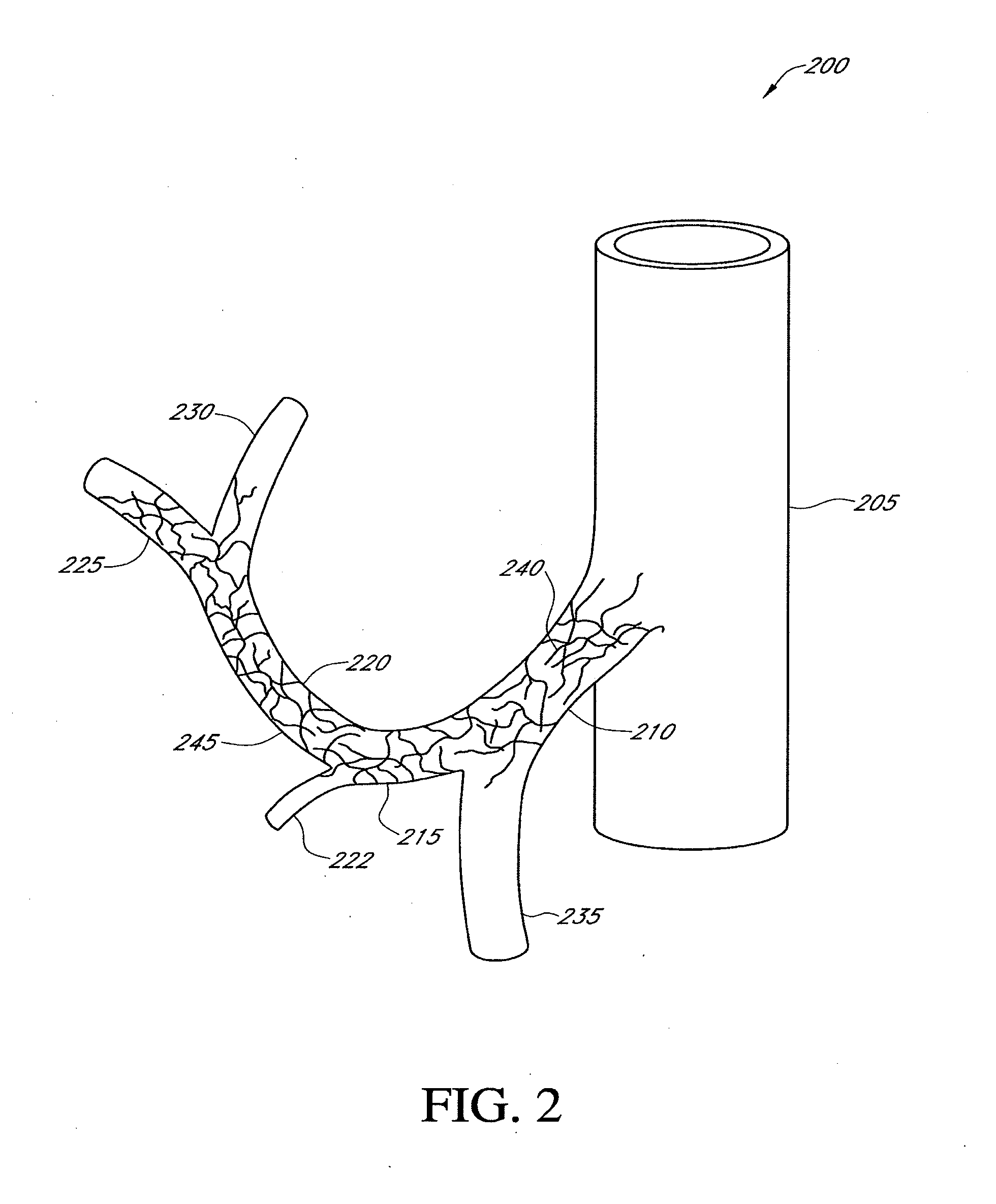Hepatic neuromodulation using microwave energy
Therapeutic neuromodulation of liver-associated nerve fibers addresses the challenges of diabetes management by regulating glucose levels, eliminating the need for daily insulin injections and glucose monitoring, offering a semi-permanent solution to diabetes treatment.
- Summary
- Abstract
- Description
- Claims
- Application Information
AI Technical Summary
Benefits of technology
Problems solved by technology
Method used
Image
Examples
example 1
A. Example 1
Three dogs were put on a high fat, high fructose diet for four weeks, thereby rendering the dogs insulin resistant. As a control, a 0.9 g / kg oral gavage polycose dose was administered at four weeks after initiation of the high-fat, high fructose diet after an overnight fast and oral glucose tolerance tests were performed at various time intervals to track glucose levels. The common hepatic arteries of the three dogs were then surgically denervated. Another 0.9 g / kg oral gave polycose dose was administered after an overnight fast about two to three weeks following hepatic denervation. Oral glucose tolerance tests were performed at various time intervals after administration of the polycose. FIG. 23A illustrates a graph of the average venous plasma glucose over time for the three dogs reported by the two oral glucose tolerance tests (OGTTs). The curve with the data points represented by black circles represents the average of the glucose measurements from the OGTT testing ...
example 2
B. Example 2
FIG. 23B illustrates the net hepatic glucose balanced obtained during a hyperglycemic-hyperinsulinemic clamp study. The data represented with circle indicators (HDN) represents the average net hepatic glucose levels of the same 3 dogs from Example 1 four weeks after denervation. The data represented with square indicators (HF / HF) represents the average net hepatic glucose levels of 5 dogs that were fed a high fat, high fructose diet. The data represented with the triangle indicators (Chow) represents the average net hepatic glucose levels of 5 dogs fed a normal diet. The data shows that toward the end of the curves, hepatic denervation restores net hepatic glucose balance to about 60% back to baseline, which suggests insulin resistance in the liver in the HF / HF dog model is largely corrected by hepatic denervation, and which indicates that hepatic denervation has an effect on hepatic glucose uptake and / or hepatic glucose production.
example 3
C. Example 3
A hepatic artery was harvested from a porcine liver as far proximal as the common hepatic artery and as far distal as the bifurcation of the left hepatic artery and the right hepatic artery. The arterial plexus was sandwiched between two sections of liver parenchyma (a “bed” and a “roof”), and placed in a stainless steel tray to serve as a return electrode. A total of 3 arteries were ablated using a RADIONICS RFG-3C RF generator using a NiTi / dilator sheath, having an exposed surface of approximately 1 / 16″ to 3 / 32″ in length. RF energy was applied for 117 seconds in each case, with the generator power setting at 4 (generally delivering 2-3 W into 55-270Ω). For the first 2 sample arteries, a K-type thermocouple was used to monitor extravascular temperatures, which reached 50-63° C. The first ablation was performed in the left hepatic artery, the second ablation was performed in the right hepatic artery, and the third ablation was performed in the proper hepatic artery. For...
PUM
 Login to View More
Login to View More Abstract
Description
Claims
Application Information
 Login to View More
Login to View More - R&D
- Intellectual Property
- Life Sciences
- Materials
- Tech Scout
- Unparalleled Data Quality
- Higher Quality Content
- 60% Fewer Hallucinations
Browse by: Latest US Patents, China's latest patents, Technical Efficacy Thesaurus, Application Domain, Technology Topic, Popular Technical Reports.
© 2025 PatSnap. All rights reserved.Legal|Privacy policy|Modern Slavery Act Transparency Statement|Sitemap|About US| Contact US: help@patsnap.com



